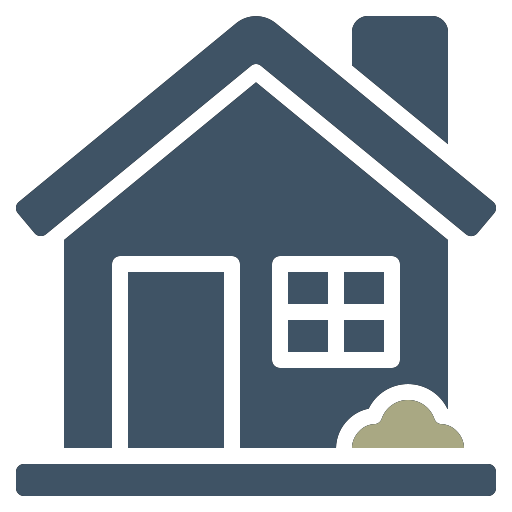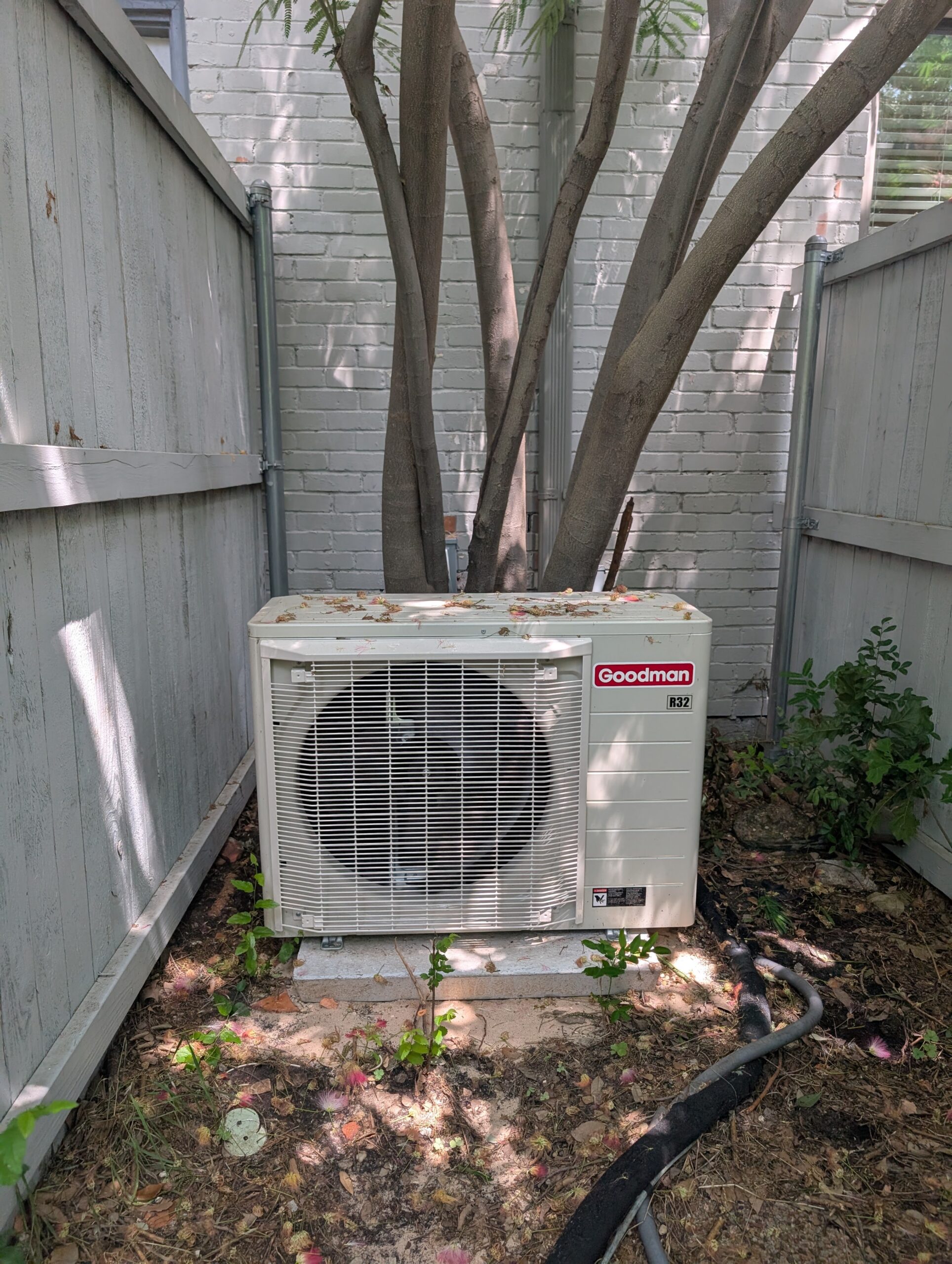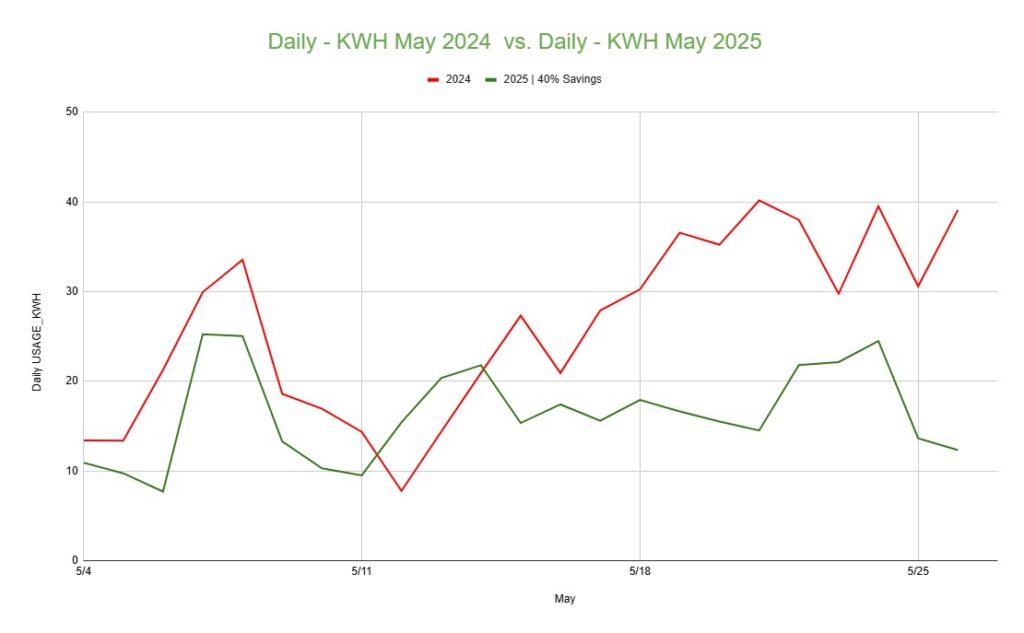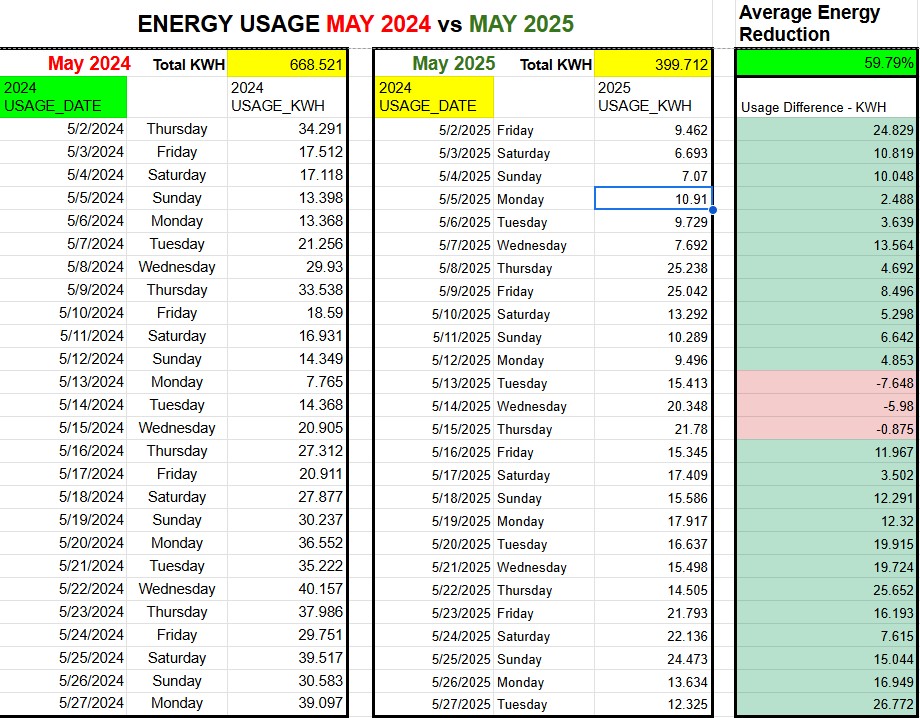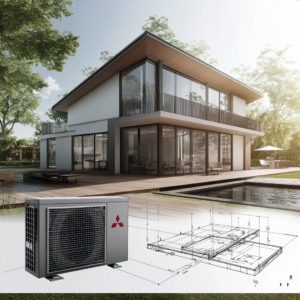A real-world case study showing how the right HVAC solution can transform an older home’s comfort and energy efficiency.
The Challenge: When Vintage Charm Meets Modern Comfort Needs
Picture this: You’re living in a charming 1,000 square foot condo built in the 1950s. The character is undeniable, but so are the comfort problems. The downstairs living area feels like a sauna when you’re entertaining guests, while the upstairs bedrooms are uncomfortably hot even during mild spring weather. Your energy bills are through the roof, and you’re constantly running fans just to sleep.
This was exactly the situation facing one of our long-time customers. Her 14-year-old HVAC system had been patched up with repairs for years, but the fundamental problem remained: the building simply wasn’t designed for modern air conditioning.
The Root of the Problem
When we investigated her condo, several issues became clear:
- Poor airflow design: The original furnace closet conversion created challenging ductwork routing through walls to the second floor
- No zoning system: The entire 1,000 sq ft space was treated as one zone, making it impossible to balance temperatures between floors
- Inefficient equipment: Her aging system was consuming far more energy than necessary for a space that size
- Structural limitations: The 1950s construction created unique installation challenges
The Solution: Smart Zoning Meets Inverter Technology
After 45 minutes of careful investigation, our team determined that a zoned inverter system was the best approach. Here’s why this solution was perfect for her situation:
Why Inverter Technology Made Sense
Traditional HVAC systems operate like a light switch – they’re either 100% on or completely off. Inverter technology works more like a dimmer switch, constantly adjusting capacity based on actual demand. Instead of always running at full blast, the system can operate at 40%, 50%, or whatever percentage is needed to maintain comfort.
This approach offers three major benefits:
- Reduced energy consumption through variable-speed operation
- Better comfort control with fewer temperature swings
- Less wear and tear on system components over time
The Goodman Side-Discharge Solution
For this project, we selected the Goodman GSX 2-ton inverter-based system with a side-discharge outdoor unit. This choice addressed several specific challenges:
Space Efficiency: The side-discharge design requires only 4 inches of clearance from a wall, perfect for tight installation spaces common in older condos.
Ultra-Quiet Operation: The inverter technology and side-discharge configuration make this system remarkably quiet – so quiet you can hear the neighbor’s old unit running over it!
Installation Flexibility: We were able to work with the existing ductwork while adding the crucial zoning capability that was missing.
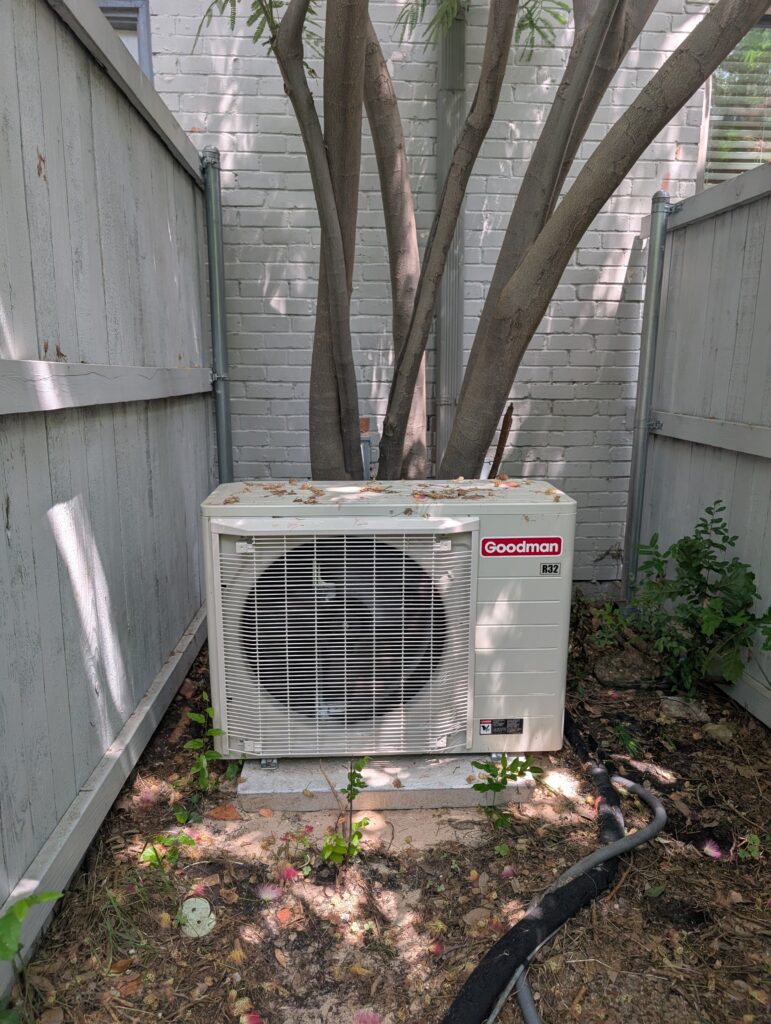
The Installation Process
Working with Existing Infrastructure
One advantage of this retrofit was the condo’s pier beam foundation, which allowed us to run new copper lines efficiently. While we could have worked with the existing lines, we opted for new copper to ensure optimal performance and reliability.
The installation team carefully integrated the new system with the existing ductwork, adding zoning controls to finally give our customer independent temperature control between floors.
Overcoming 1950s Construction Challenges
Retrofitting modern HVAC into a 1950s building isn’t straightforward, but experienced technicians know how to work with these older structures. The key is understanding that comfort problems in older homes often require creative solutions rather than just equipment replacement.
The Results: Transformation You Can Measure
The difference was dramatic and immediate. Using smart meter data, we tracked energy usage for 25 days starting May 2nd, 2024, and compared it to the same period in 2023:
Energy Savings That Speak for Themselves
- Total energy usage dropped from 668 kWh to 399 kWh
- That’s a 40% reduction in energy consumption
- Daily usage went from 30-40 kWh to mostly low-to-mid teens
- Only occasional days in the 20s, even during peak cooling season
Comfort Finally Achieved
But the real victory wasn’t just in the energy savings – it was in life-changing comfort improvements:
- Bedroom temperatures now easily maintain 68°F
- No more fans needed for sleeping
- Balanced temperatures throughout the home
- Quiet operation that doesn’t disturb daily activities
As our customer put it: “I’m ecstatic that my bedroom is finally cold and I can sleep without using fans.”
Why This Approach Works for Older Homes
his project perfectly illustrates several important principles for HVAC retrofits in older buildings:
Assessment Before Action
Rather than simply replacing like-for-like, we spent time understanding the unique challenges of this 1950s construction and airflow limitations.
Right-Sized Modern Technology
The 2-ton inverter system was perfectly sized for the 1,000 sq ft space, avoiding the common mistake of oversizing equipment.
Zoning for Comfort
Adding zoning capability addressed the fundamental issue that couldn’t be solved with repairs alone.
Quality Installation Matters
Working with existing infrastructure while upgrading key components requires skill and experience.
The Investment Perspective
While a complete HVAC replacement is a significant investment – often over $10,000 – this project demonstrates the long-term value:
- 40% energy savings will provide ongoing monthly bill reductions
- 15-20 year equipment lifespan with proper maintenance
- Dramatically improved comfort and quality of life
- Increased home value from modern, efficient HVAC
When you calculate the energy savings over the system’s lifetime, combined with the comfort improvements, the investment pays dividends for years to come.
Key Takeaways for Homeowners
If you’re living with comfort problems in an older home, this case study offers several important lessons:
Don’t Keep Patching Problems
Sometimes ongoing repairs are a sign that the fundamental system design needs to be addressed, not just maintained.
Modern Technology Can Work in Old Buildings
With the right approach, inverter technology and zoning can be successfully retrofitted into vintage construction.
Professional Assessment Is Crucial
The 45 minutes our team spent investigating this customer’s specific situation was time well invested in finding the right solution.
Energy Efficiency and Comfort Go Hand-in-Hand
The best HVAC solutions don’t make you choose between saving money and being comfortable – they deliver both.
Looking Forward
This project, completed in late April 2025, represents the kind of problem-solving approach that transforms how people live in their homes. Rather than just replacing equipment, we solved the underlying comfort and efficiency challenges that had persisted for years.
The goal isn’t just to install a new system – it’s to make you genuinely comfortable in your home while reducing your energy costs.
Ready to transform your home’s comfort and efficiency? Contact us today to discuss how modern HVAC solutions can work in your unique space. We believe every homeowner deserves to be comfortable in their home, regardless of when it was built.


